After placing the first side of my new barrier garden edge system, I needed to get cracking on preparing some plantable area for all the seedlings coming on in the greenhouse. The aim: clear and dig over the area where my main garden beds were, removing weed roots etc as I go, and re-form the beds into longer east-west oriented beds and paths as I go.
This round, I'm working over the space that was occupied by one row of four former beds, and the central path that ran between the two sets of four beds.
I have worked in stages, as time and energy allowed. At the time of posting, I'm not quite finished this section, as a rib injury two weeks ago has prevented me doing any digging or lifting, or even much bending. (Note to the wise: do NOT climb over a fence without anchoring your foot very firmly, so you don't slip and come down ribs-first on the top of a square fence post!)
This round, I'm working over the space that was occupied by one row of four former beds, and the central path that ran between the two sets of four beds.
I have worked in stages, as time and energy allowed. At the time of posting, I'm not quite finished this section, as a rib injury two weeks ago has prevented me doing any digging or lifting, or even much bending. (Note to the wise: do NOT climb over a fence without anchoring your foot very firmly, so you don't slip and come down ribs-first on the top of a square fence post!)
The section you see covered in newspapers was the ONLY part of the garden where I actually did what I meant to do to the whole garden area last autumn - I had piled up lots of decompostable materials under the young apple tree, then covered the areas with black plastic and left everything to rot down. Now, I removed the plastic, lightly worked the surface to remove the couch roots that were still present (most of them directly under the plastic), and then decided to cover it in 5-6 sheets of newpaper, presoaked and overlapped, as I cannot dig this part over fully due to the roots of the apple tree. This is to prevent weeds coming back through.
Next to that, I dug over the space that formerly had one wooden-sided bed in it, and the adjacent path area etc. This took a lot less time than I expected. I removed every bit of couch, buttercup etc I could as I went. I think scooped out the centre of this area to create a pathway, piling the extra dirt on the adjacent parts, which are the first sections of the new soon-to-be long beds. After a bit of raking and shaping, I spread a couple of inches of compost over both.
Next to that, I dug over the space that formerly had one wooden-sided bed in it, and the adjacent path area etc. This took a lot less time than I expected. I removed every bit of couch, buttercup etc I could as I went. I think scooped out the centre of this area to create a pathway, piling the extra dirt on the adjacent parts, which are the first sections of the new soon-to-be long beds. After a bit of raking and shaping, I spread a couple of inches of compost over both.
| I also wanted to clear the former central pathway of grass before finishing and planting these beds, as otherwise the couch etc there would quickly creep back in. Poking around I rediscovered the fact that I had laid old carpet down this path a couple of years back - it was completely overgrown with couch. However, with the application of a bit of muscle, pulling up the carpet also pulled up nearly all the couch and buttercup, roots and all. I pulled and pulled and rolled and rolled until I had it all up. |
| The next former-bed over had had the wooden sides removed last season, as they'd fallen to bits. I had used old bricks to make sides in the meantime, and lined both adjacent paths with black plastic. Now I removed bricks and plastic, and rough-cleared the chickweed, dock, spring onions etc from the bed. |
The untidyness of the rest of that half of the garden area was annoying me, so I decided to get the weedeater out and just level it. While I was at it, I removed the wooden sides from that last bed on that side, and the first two beds on the other side, and weedeatered that too.
| Next I went back to the first two small sections I had dug. I spread grass clippings over both, then mulched the first side and pathway in the middle with woodchip. (Read why HERE). I then planted out some broccoli and purple kohl rabi in urgent need of planting into the now woodchipped patch. |
| As it's time for white butterflies and diamondback moths to start being a big problem for brassicas, I added square hoops (reused) made of steel rebar, covered in pool noodles wrapped in weedmat (since I had both in the shed) to protect the mesh, and then covered them in Wondermesh, anchored with bricks for now. I also barked the second small patch. |
| Now I continued digging over the ground along the side of my new garden barrier edge, forming what will be a long bed, just over a metre wide. At the far end you can see the rolled back edge of the weedmat which had been put down on an area off the end of the beds, where I grew lots of container plants one year. Again, now full of couch and buttercup. |
| I raked it over, then covered with compost, a sprinkling of dolomite lime, then grass clippings and woodchips. After a good watering, I planted out cabbage and cauliflower seedlings, and added more hoops. The spot at the front is left for some determinate tomato seedlings, which also need to be under the mesh to protect from tomato-potato psyllid. |
I've since planted 3x Russian Silvery Fir tomatoes under the mesh, with tomato cages around them, a clump of Miner's Lettuce, and interplanted the brassicas with a tray of beetroot seedlings. And later added four more kohl rabi seedlings which were started later (for staggered harvesting). The covered bed is now full.
At this point I still needed to remove the wooden frame from and dig over one small garden patch at the far end (where the fork is stuck in the ground), but my ribs have prevented me doing so. Today I'm finally feeling mostly pain-free, so it will be on the agenda soon!
At this point I still needed to remove the wooden frame from and dig over one small garden patch at the far end (where the fork is stuck in the ground), but my ribs have prevented me doing so. Today I'm finally feeling mostly pain-free, so it will be on the agenda soon!
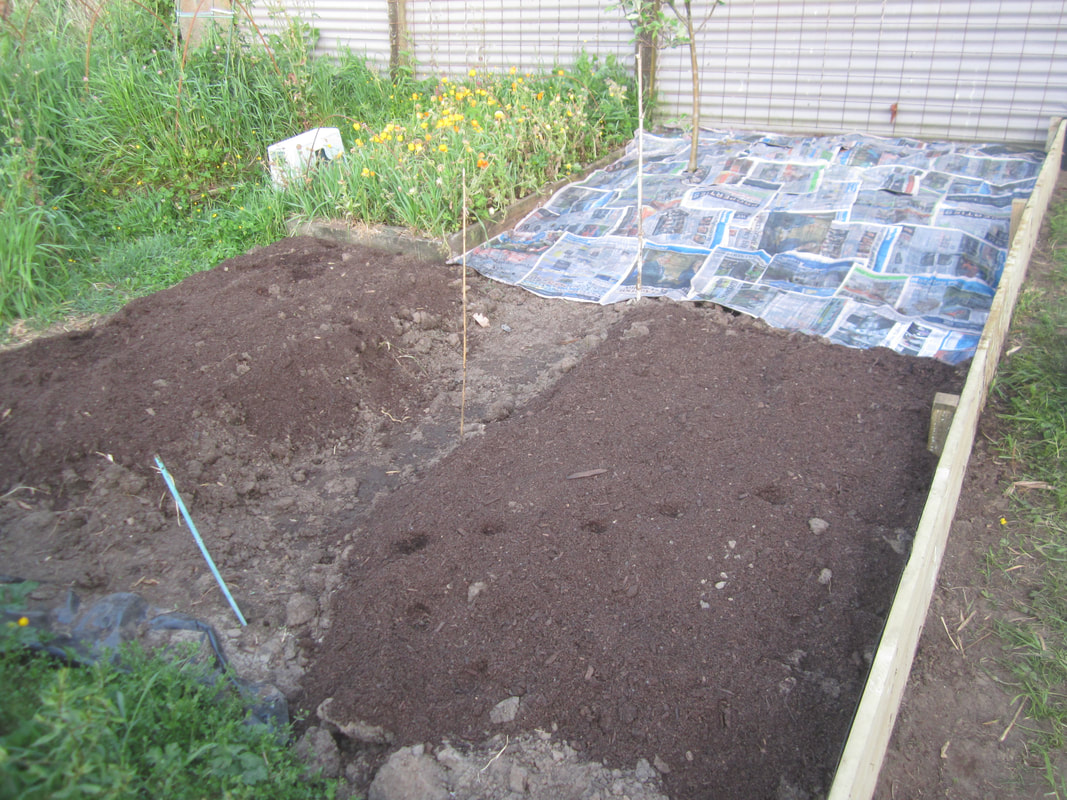
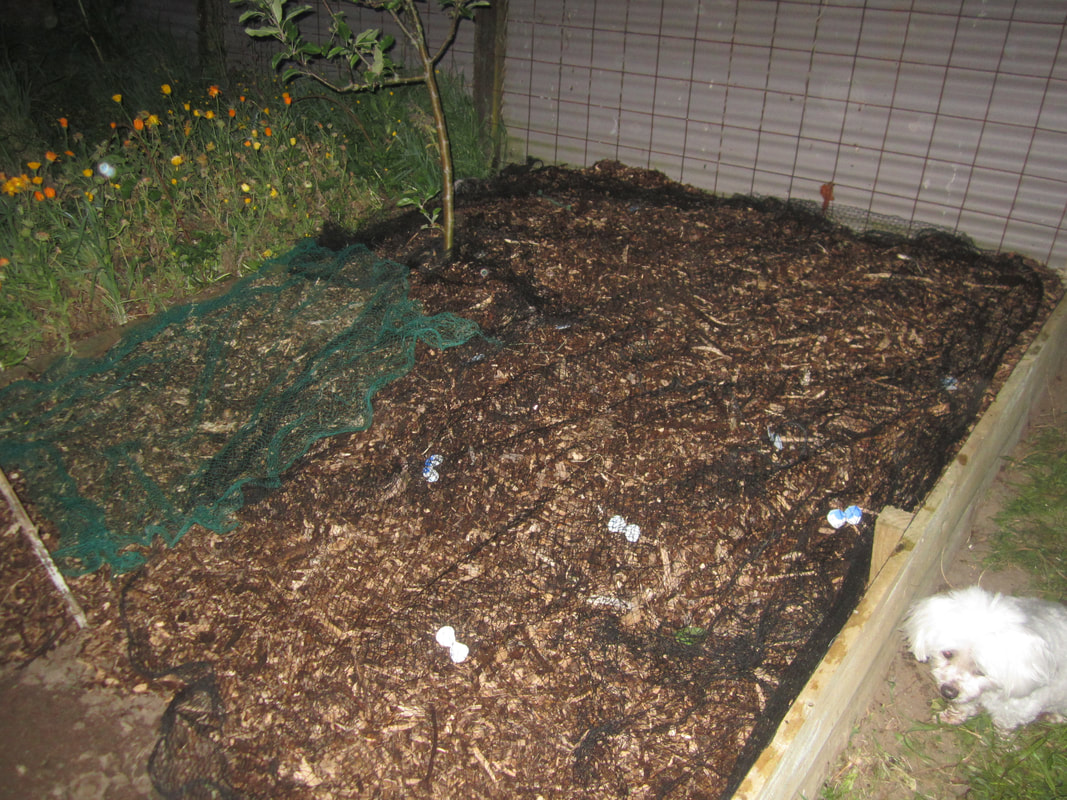
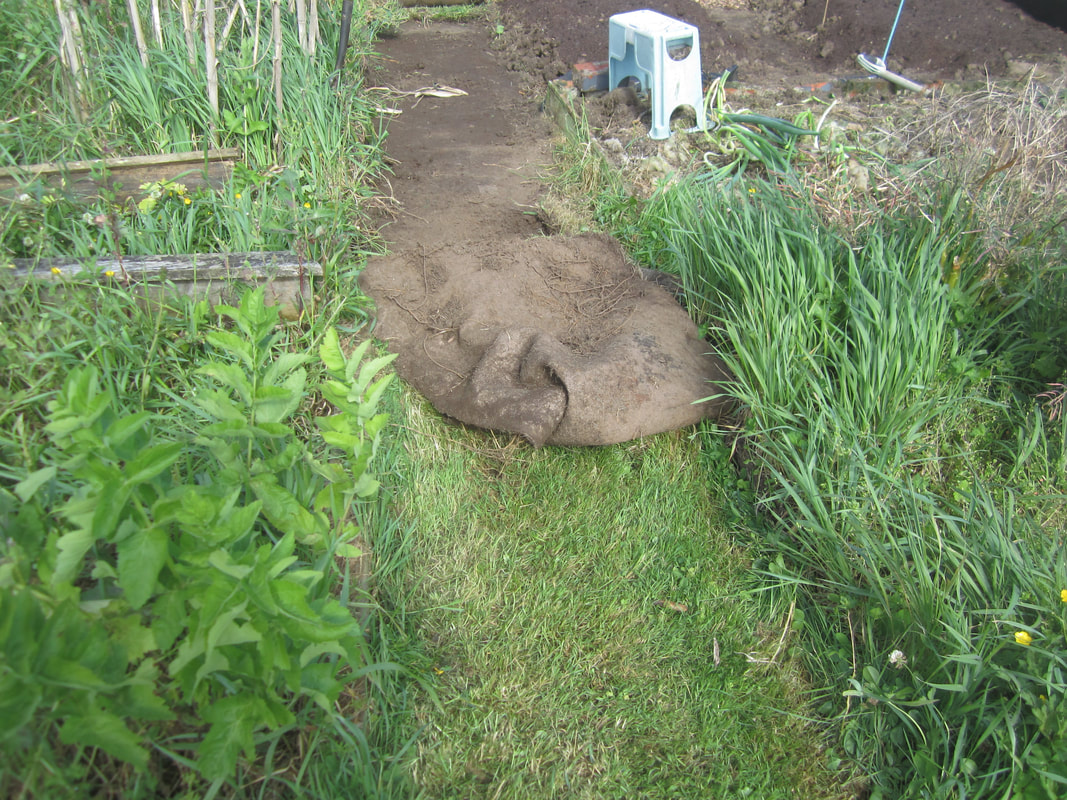
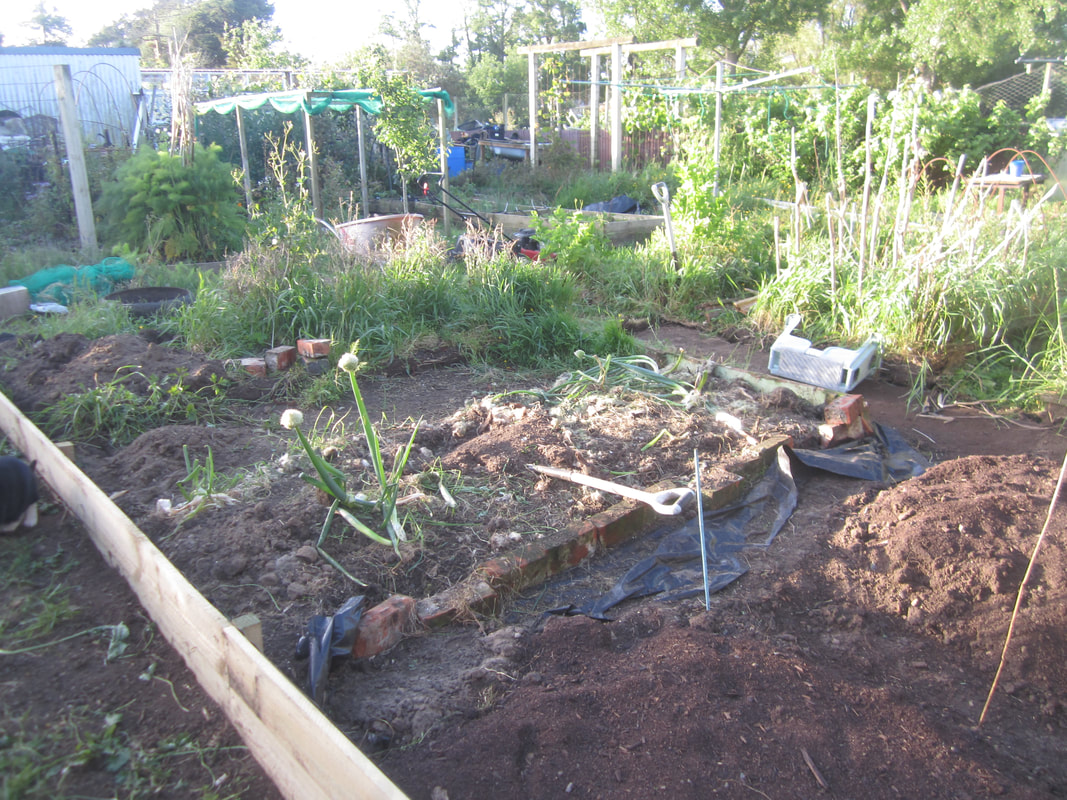
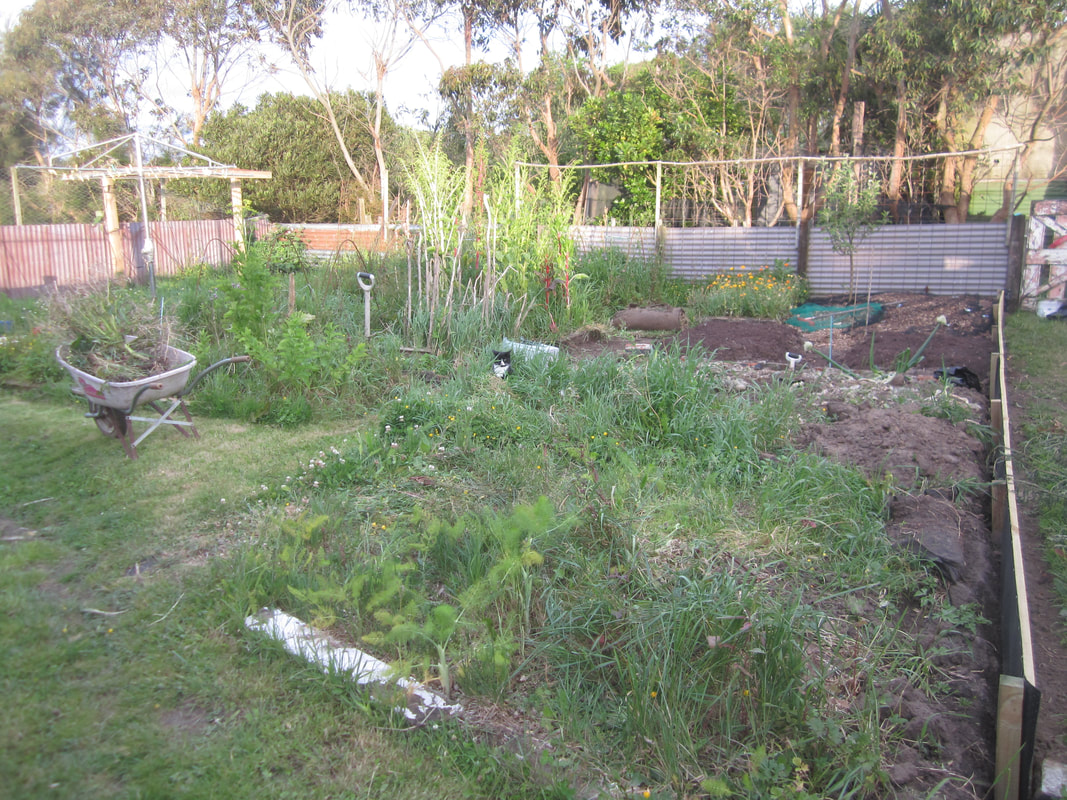
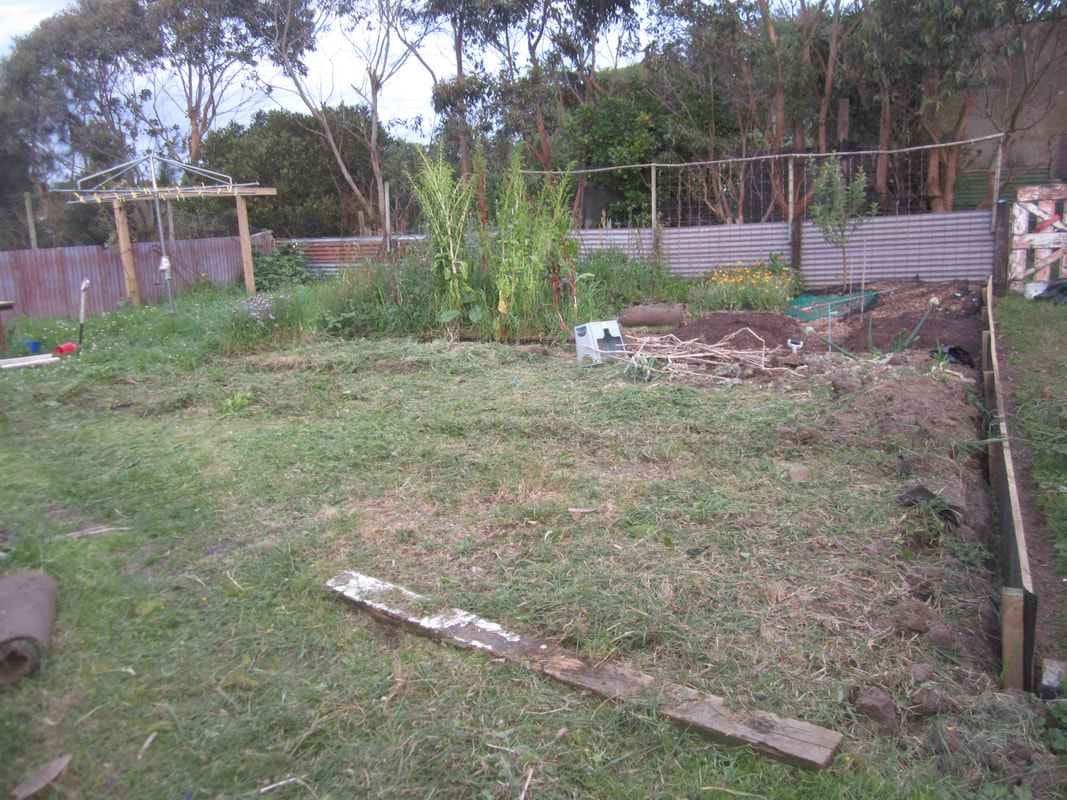
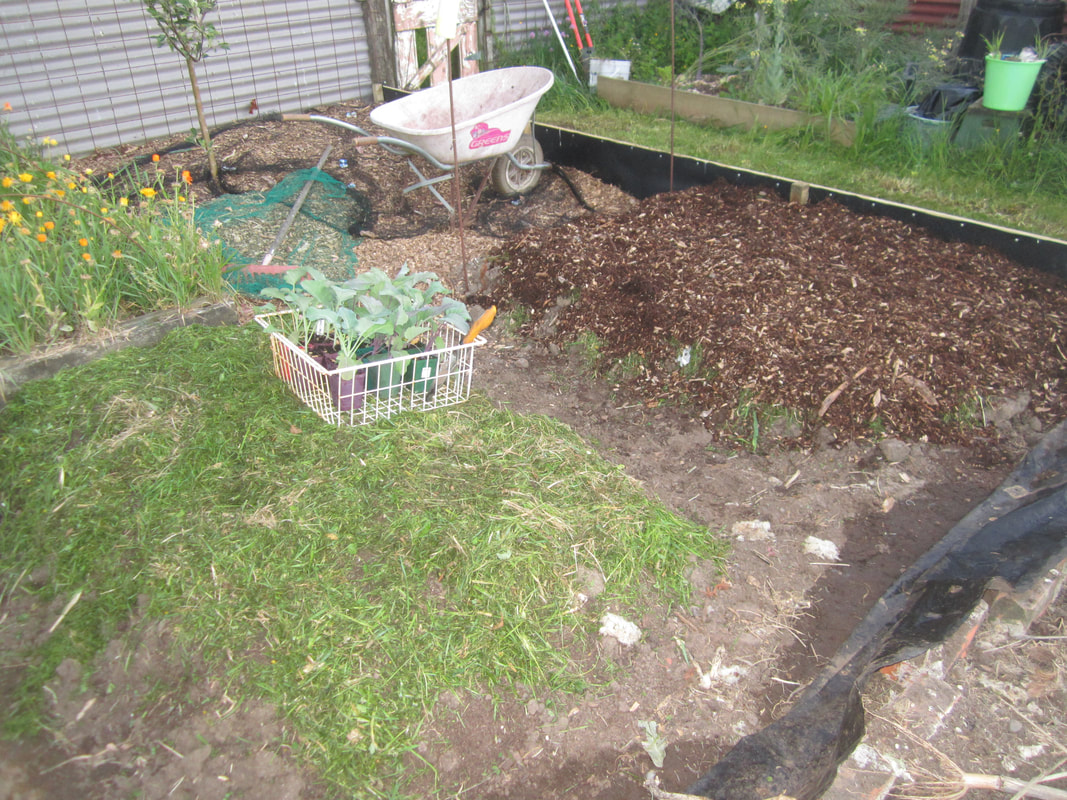
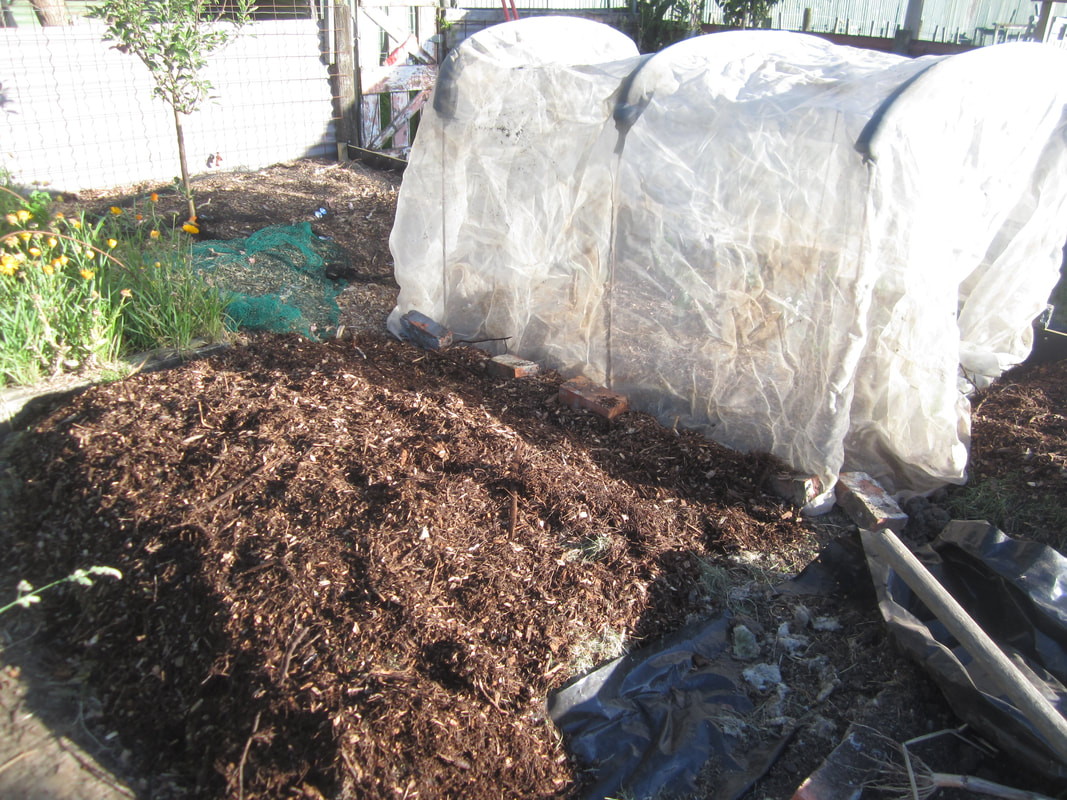
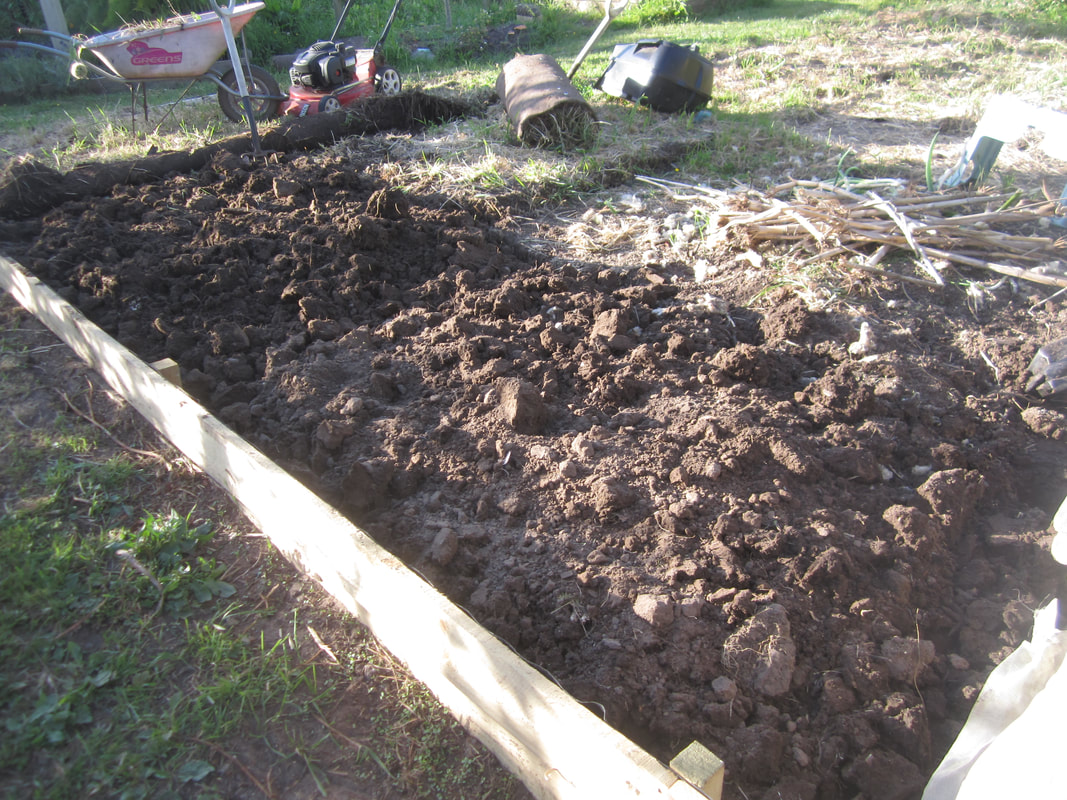
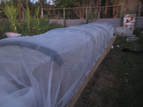
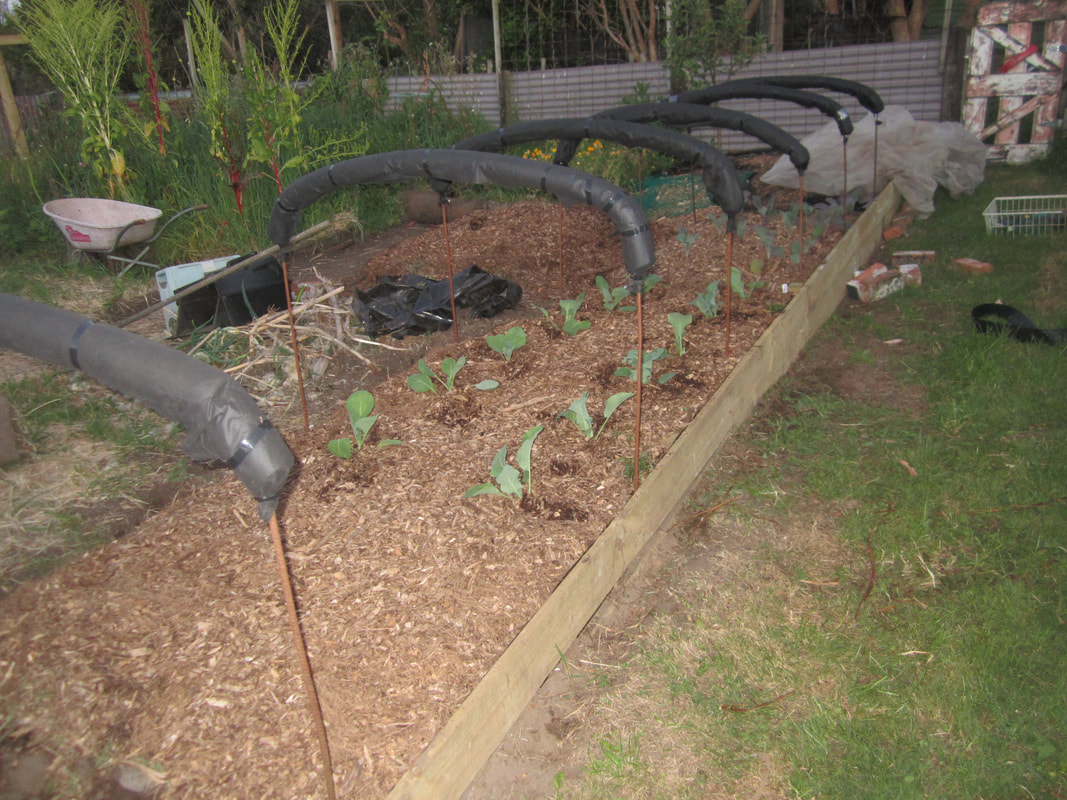
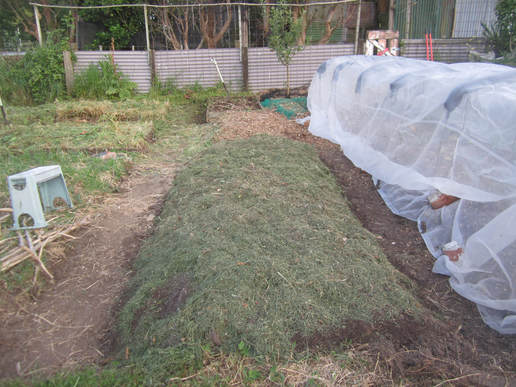
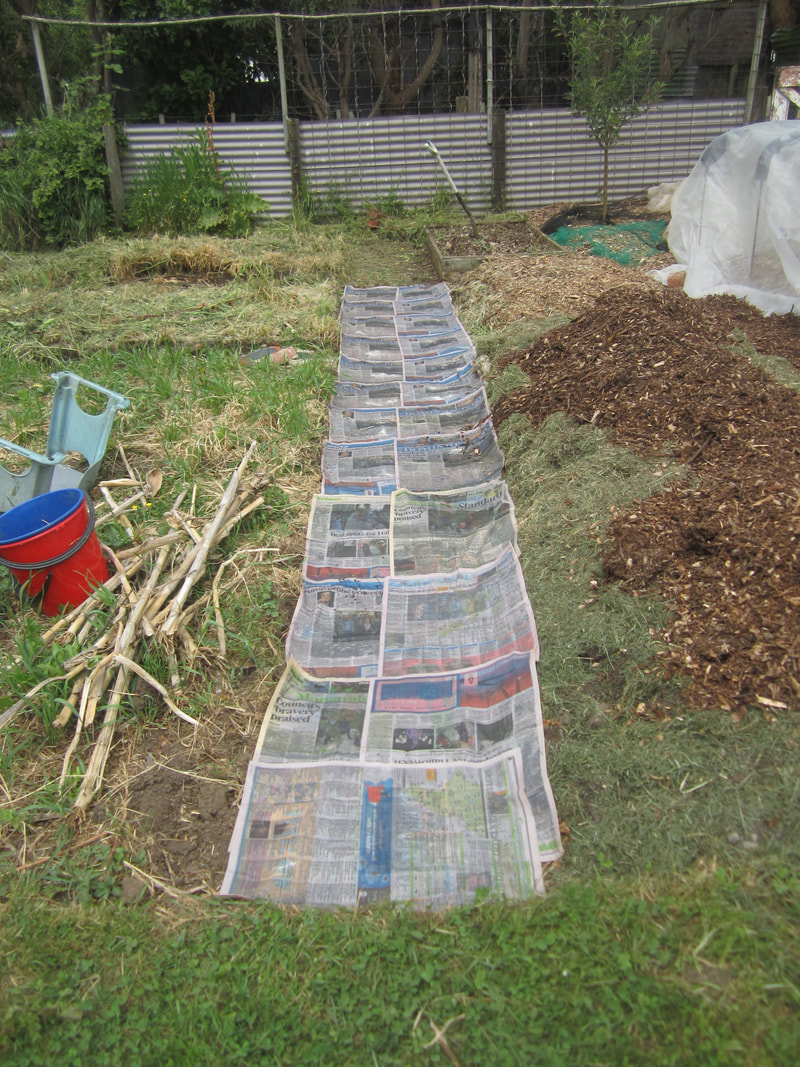
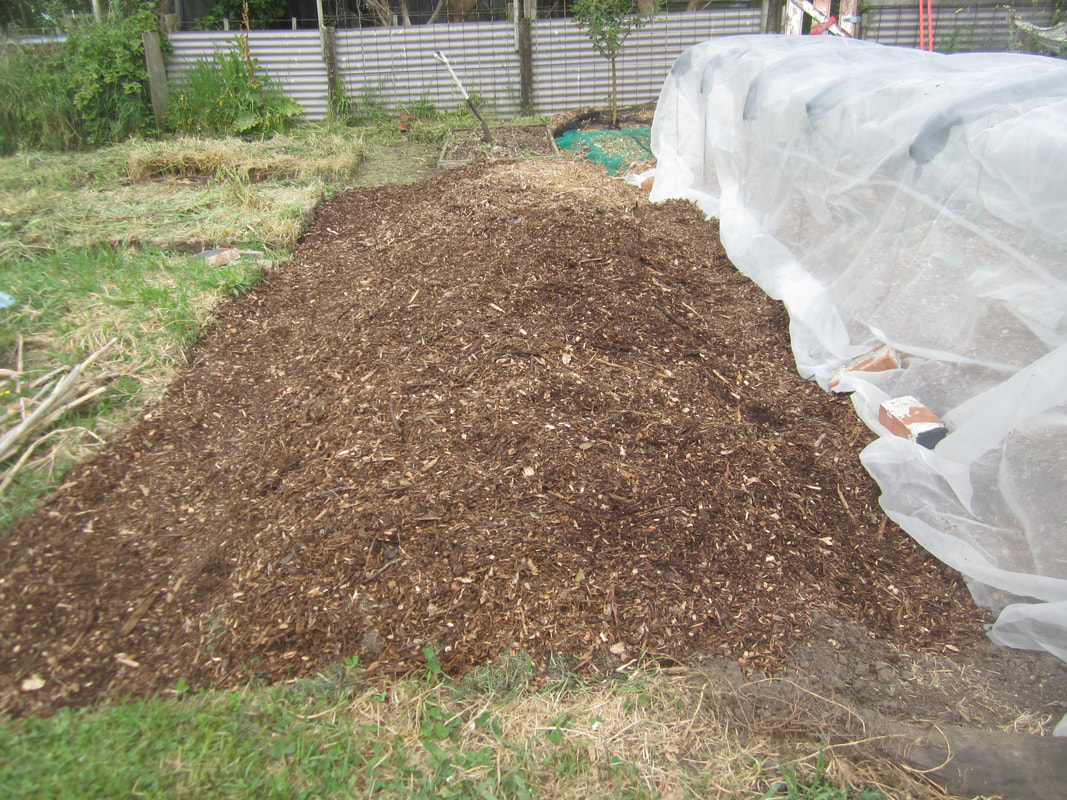
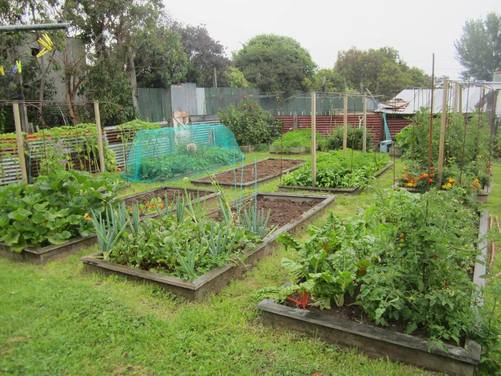
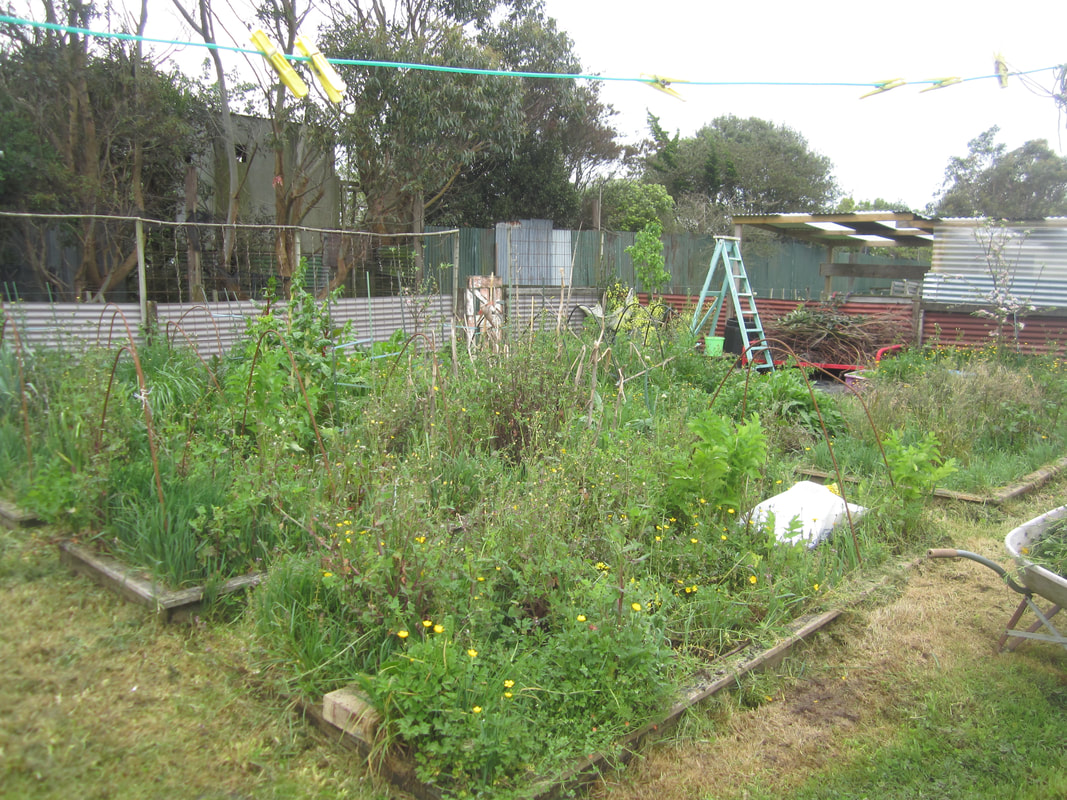
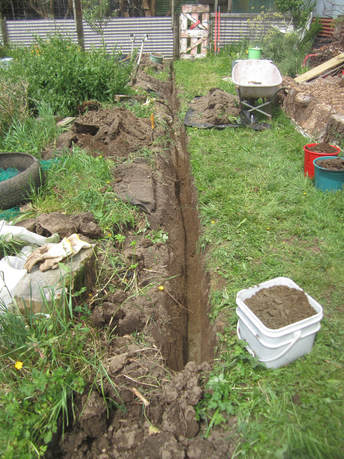
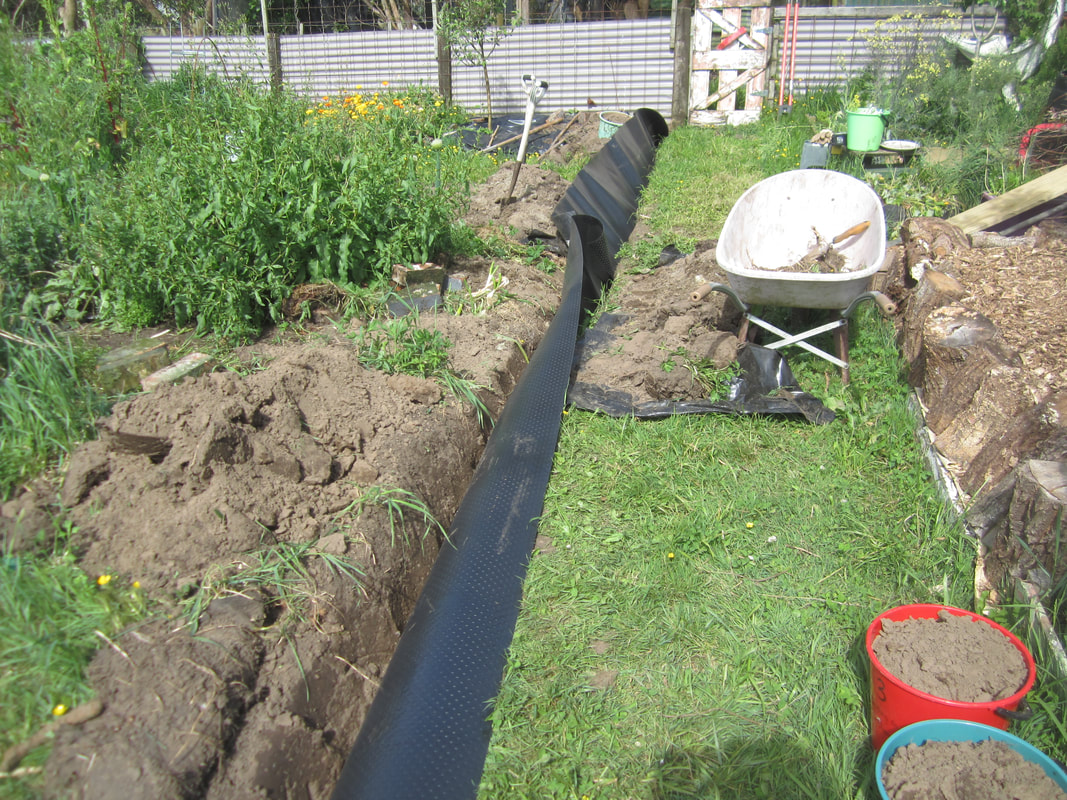
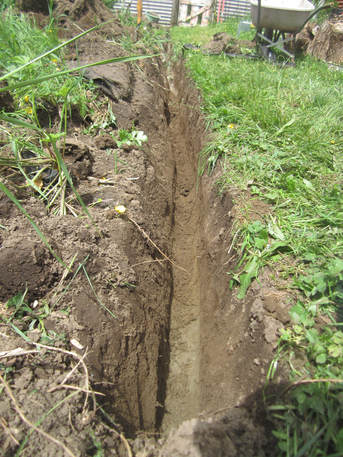
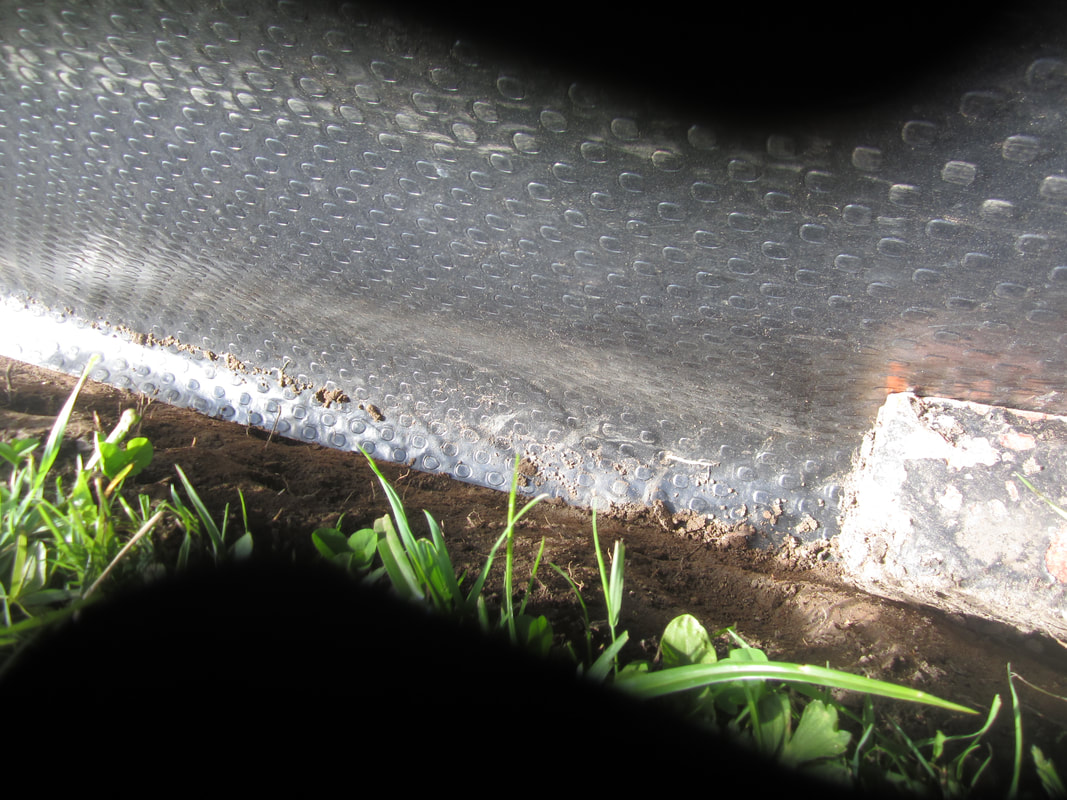
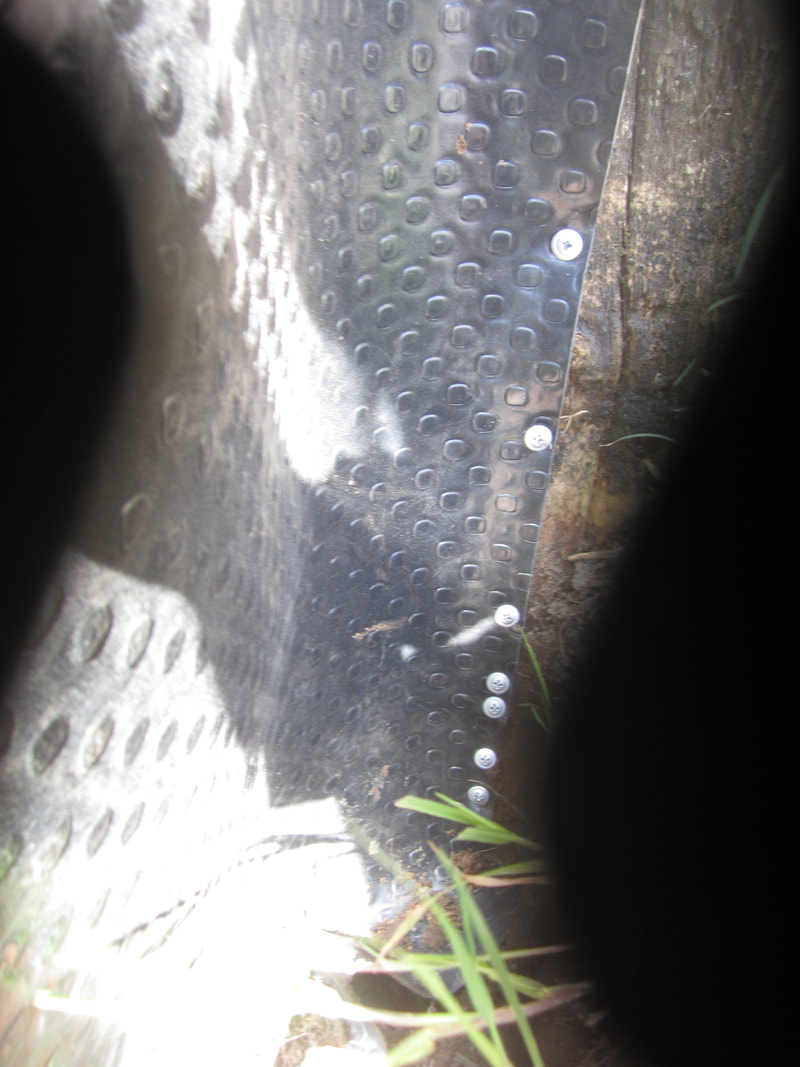
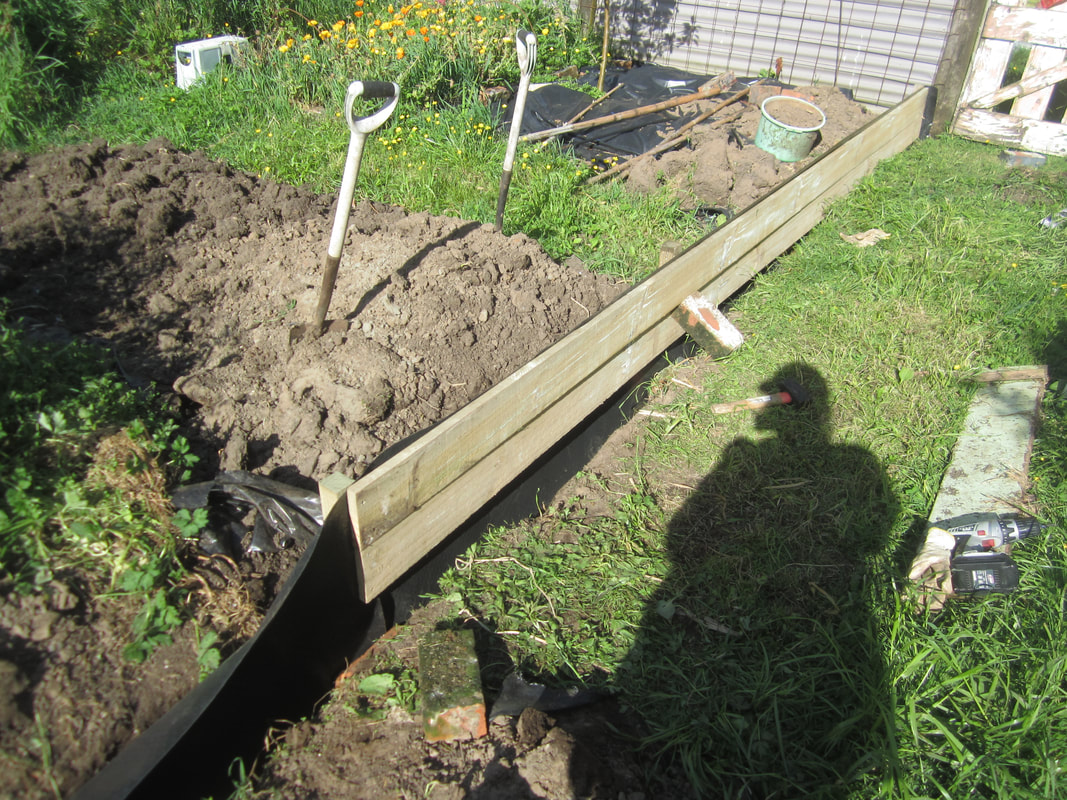
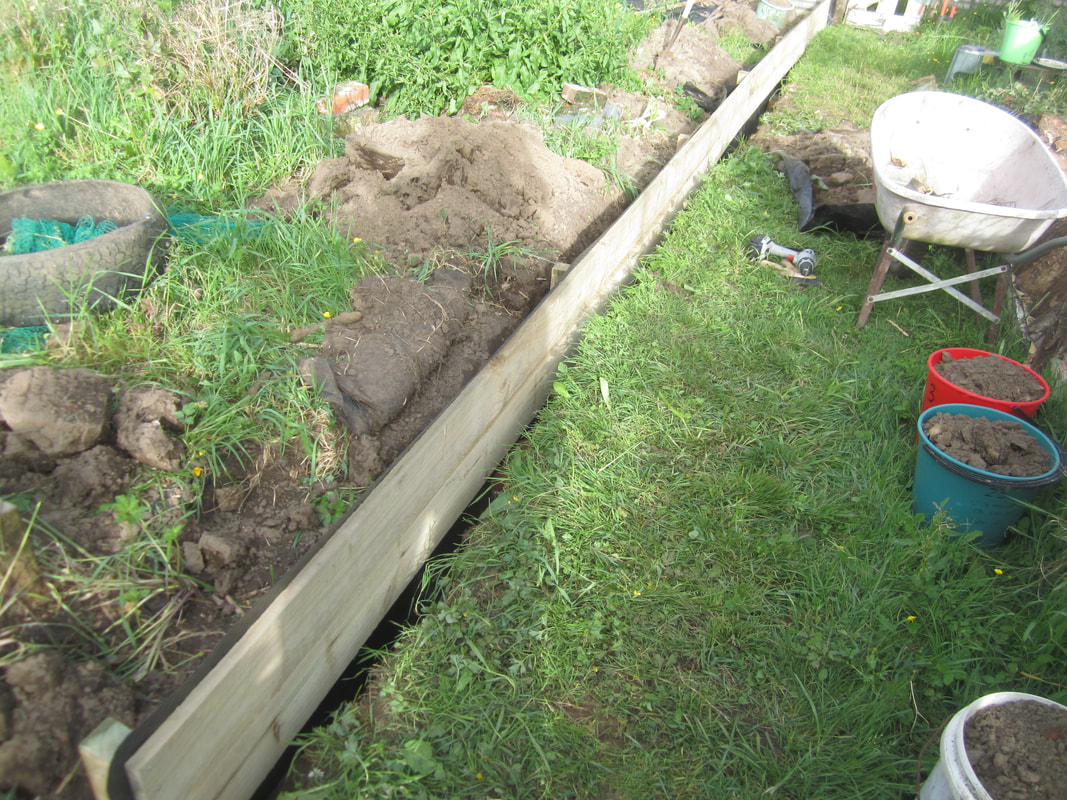
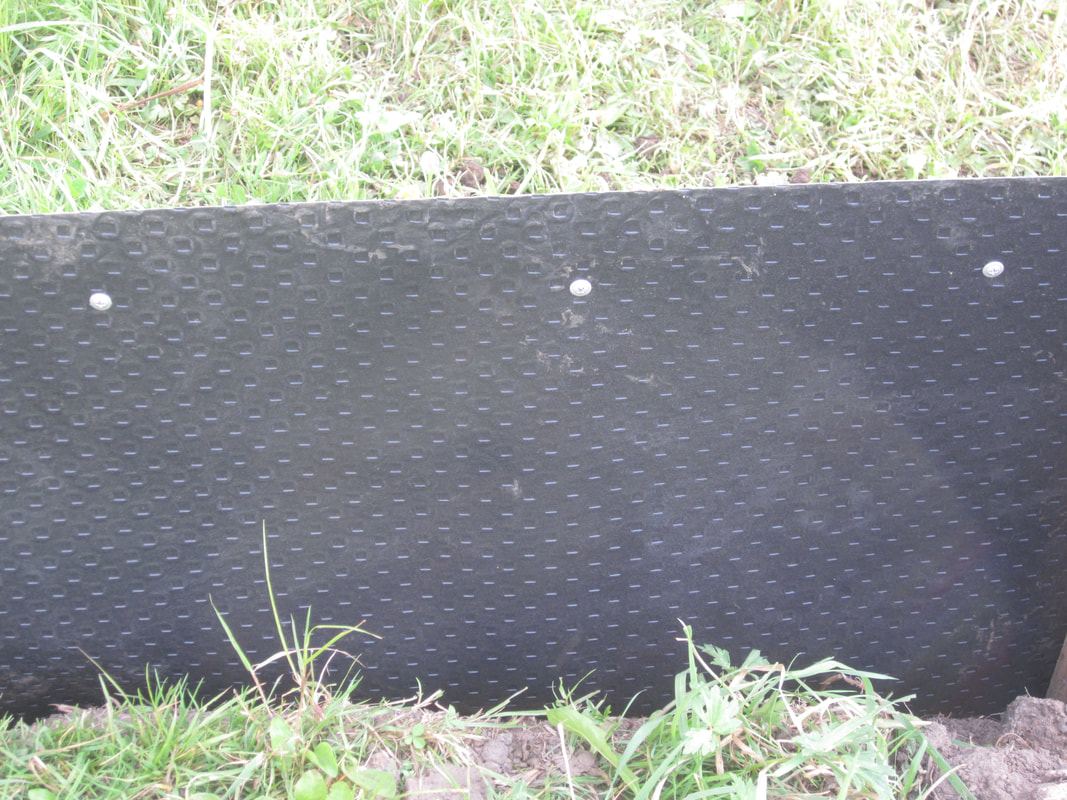
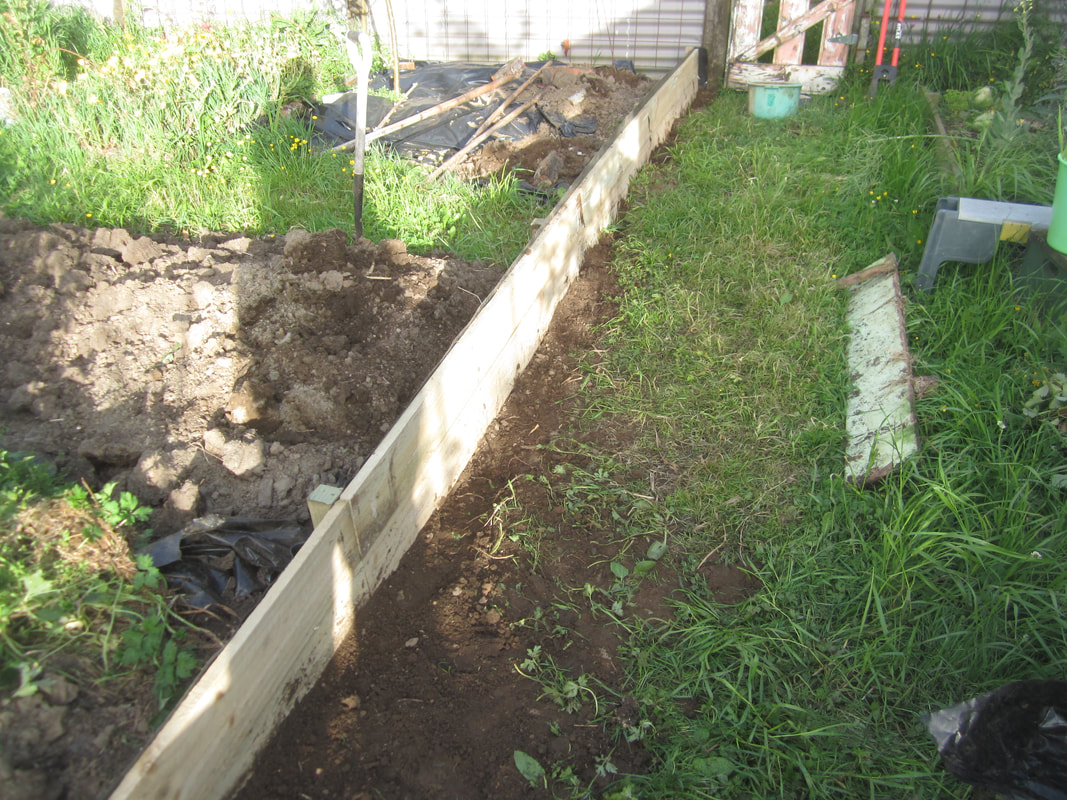
 RSS Feed
RSS Feed
